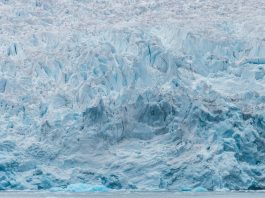Scientists produce environmentally friendly frost-resistant coatings as an alternative to conventional de-icers.
Airports throughout winter require huge amounts of de-icing fluids to allow the planes to take off safely. As passengers wait to board, delays become longer when the airplanes need to be dowsed with thousands of gallons of de-icing fluids to help them remove thick frost. However, as soon as the plane takes off, the majority of the liquid slides off from the surface of the aircraft and pollutes freshwater streams and lakes.
In an endeavour to make a product that is both more efficient, environmentally safe, and is immune to ice for such demanding industries and consumers. A research team including Sushant Anand, UIC Assistant Professor of Mechanical Engineering, and Rukmava Chatterjee, a UIC PhD student, has developed a longer-lasting alternative to conventional de-icers, with their frost-resistant coating technology having the potential to benefit other industries.
Frost-resistant coatings
“We questioned the lifetime of the cryoprotectants and looked at new ways to increase their effectivity,” Anand explained. “Glycols dissolve very fast in the water and get washed away before the plane takes off, and it is a serious problem that costs hundreds of millions of dollars – most of which literally ends up in the drain. We thought, why not improve such chemicals themselves, and make alternatives that can last longer while being more biofriendly. And that is what we ended up doing.”
To achieve their goal, the researchers developed an extensive collection of samples with more than 80 frost-resistant coatings, which could be classified as polymeric solutions, emulsions, creams, and gels. The formulations can be easily applied to aluminium, steel, copper, glass, plastic, or any industrial surface without preconditioning or expensive surface treatments.
“Our coatings are an all-in-one package, which can delay formation of frost for extended hours and simultaneously cause any ice formed on its surface to easily shed off by a gentle breeze or simple substrate tilting,” Chatterjee added.
Their work is reported in an Advanced Materials article titled ‘A family of frost-resistant and icephobic coatings.’
Phase change material-based formulations
The coatings are a family of phase change material-based formulations and multifunctional coatings, which can tailor solid foulant adhesion on functional surfaces, ranging from ice to bacteria, irrespective of their inherent material structure and chemistry. This was engineered by regulating how chemicals leach out of the material system and by creating a lubricating surface layer that is both slippery and non-freezing in nature.
The anti-freezing gels are also transparent, which is critical for applications such as traffic signals, runway lights that assist pilots during landings, automotive windshields or building windows.
“Imagine coating your smartwatch with our gel that can inhibit ice accretion in the chilly negatives while simultaneously preventing any bacterial contamination,” Chatterjee said.
“Since our anti-icing sprays are bio-friendly and anti-bacterial, we even think there is a potential to use them in agriculture to prevent crops from being ruined by severe frost,” Anand noted. “But that is a pipe dream, and we need to do more studies to see if there will be any long-term adverse effect on the plants.”
A worldwide patent application titled, ’Compositions and Methods for Inhibiting Ice Formation on Surfaces’ has been filed by UIC’s Office of Technology Management.
“There is great potential in these materials for many applications, and I think the day when commercial versions of our materials come out just got closer,” Anand concluded.









